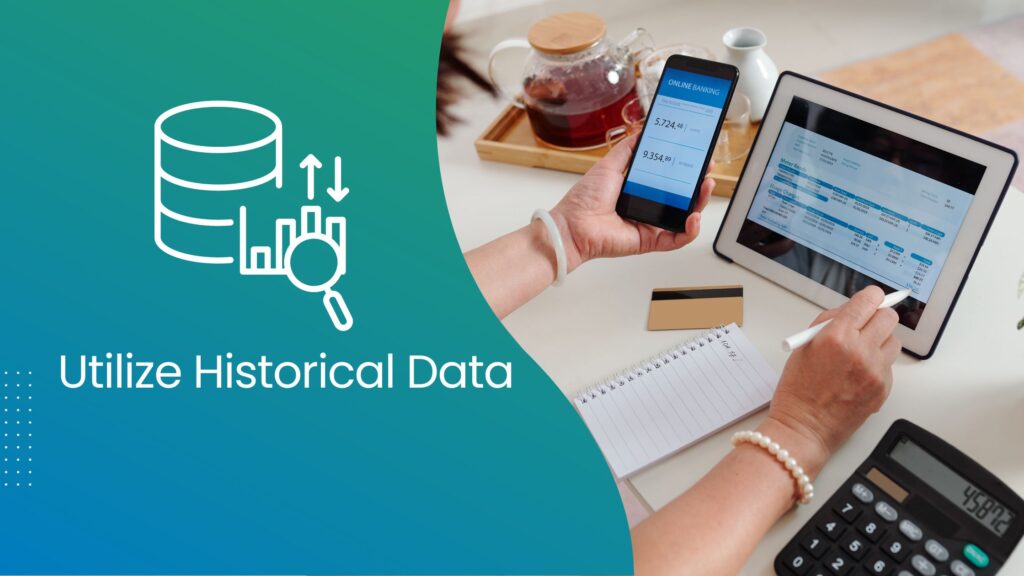Budgeting and forecasting are essential tools for managing a business’s financial health. By improving these budgeting forecasting processes, you ensure more accurate financial planning and better decision-making. Below are 10 actionable steps to enhance your budgeting forecasting practices.
1. Assess Your Current Budgeting Process
Start by analyzing your existing budgeting forecasting methods. How are you currently tracking revenue, expenses, and cash flow? Are you using spreadsheets, software, or manual processes? An honest evaluation of your current system will reveal areas that need improvement.
For example, if your team spends excessive time manually entering data, it may be time to switch to automated budgeting forecasting tools. Additionally, review your budget against actual performance over the past few years. This will help you identify discrepancies and understand where your assumptions may be off.
Pro Tip: Perform a SWOT analysis (Strengths, Weaknesses, Opportunities, Threats) to get a clearer view of your financial planning process. This will guide your improvements.

2. Set Clear Financial Goals
Setting clear, measurable financial goals is critical to a successful budgeting forecasting process. Your goals should align with the overall business strategy and address both short-term needs and long-term objectives. SMART goals (Specific, Measurable, Achievable, Relevant, Time-bound) are an excellent framework to ensure your goals are actionable.
For example, instead of a vague goal like "increase revenue," try "increase revenue by 10% within the next six months by expanding into two new markets."
Additional Tip: Involve key stakeholders in goal setting to ensure the entire team is aligned and invested in achieving these objectives.
Ready to streamline your business operations and boost efficiency?
Start improving your budgeting forecasting today with these expert strategies. Contact us to learn more!

3. Utilize Historical Data
Historical data is a goldmine when it comes to budgeting forecasting. By reviewing past financial data, you can identify trends, seasonal patterns, and recurring expenses. This provides a more reliable basis for future predictions. For example, if your sales traditionally peak during certain months, you can allocate more resources during those times.
To make the most of historical data:
- Compare year-over-year performance.
- Analyze variances between past forecasts and actual results.
- Factor in both internal trends (e.g., staff changes) and external forces (e.g., market shifts).
Pro Tip: Use at least 3 years of data to spot trends and make more informed predictions.

4. Incorporate Flexible Scenarios
One of the most common pitfalls in budgeting forecasting is being too rigid. You should always be prepared for unexpected events, such as market changes, new competitors, or economic downturns. Scenario planning allows you to create flexible models for best-case, worst-case, and most-likely outcomes.
For instance, if your best-case scenario involves launching a new product successfully, the worst-case scenario might involve delays or lower-than-expected sales. By preparing for these, you can quickly adapt your budget when conditions change.
Additional Tip: Regularly update these scenarios, especially in volatile markets or periods of economic uncertainty.
5. Leverage Financial Forecasting Software
Technology can drastically improve the accuracy and efficiency of budgeting forecasting. Specialized financial forecasting software offers real-time data, automated calculations, and sophisticated analytics. By eliminating manual errors, you can create more accurate forecasts and quickly adjust them as needed.
Popular tools like Acumatica, QuickBooks, Oracle NetSuite, and Adaptive Insights provide a range of functionalities like cash flow forecasting, scenario analysis, and real-time reporting.
Pro Tip: Choose software that integrates well with your existing systems (like ERP or CRM platforms) to streamline data flow and minimize disruptions.
Struggling with your budgeting forecasting?
Let our team guide you to better financial outcomes—request a demo today!

6. Integrate Cross-Departmental Input
A common mistake is to create budgeting forecasting solely within the finance department. While finance manages the process, insights from other departments like sales, marketing, HR, and operations are vital for accuracy. Each department has unique perspectives on revenue, expenses, and potential risks.
For example, the sales team can provide insights on expected customer demand, while marketing might forecast campaign expenses. HR can help anticipate staffing needs and related costs.
Additional Tip: Set regular cross-departmental meetings during the budgeting forecasting process to ensure ongoing collaboration.
7. Monitor KPIs Regularly
Key Performance Indicators (KPIs) provide a snapshot of how well your business is performing against your budgeting forecasting plan. Common KPIs include profit margins, cash flow, return on investment (ROI), and expense ratios. Monitoring these metrics regularly ensures you stay on track and can adjust your budget if things start to deviate.
For instance, if your cash flow is tighter than expected, it may indicate that your revenue projections were too optimistic, prompting an immediate review of your budget.
Pro Tip: Use dashboards to visualize KPIs in real-time, enabling faster decision-making.

8. Prepare for External Factors
External factors such as market shifts, economic downturns, changes in regulations, or technological advances can significantly impact your budgeting forecasting. Staying informed about these factors and incorporating them into your forecasts will help mitigate risks.
For example, if your industry is facing new regulations that will increase compliance costs, you should factor those into your budget. Similarly, anticipating market disruptions (e.g., from new competitors or supply chain issues) allows you to create contingency plans.
Pro Tip: Set up Google Alerts or subscribe to industry news sources to stay updated on external factors that could impact your business.
9. Continuously Adjust and Review
Budgeting forecasting are living documents. It’s important to review and adjust them regularly, especially if your business is going through periods of rapid growth or change. Quarterly reviews are common, but in volatile markets, monthly or even weekly adjustments may be necessary.
By comparing actual performance to your forecasts, you can spot variances early and course-correct. For example, if revenue is consistently lower than forecasted, you might need to adjust your spending or reallocate resources.
Additional Tip: Involve the leadership team in regular reviews to ensure alignment across all departments.
Looking for smarter budgeting forecasting solutions?
Schedule a consultation with our experts and discover how we can help optimize your financial planning!
10. Improve Communication Around Financial Planning
Finally, communication is key to successful budgeting forecasting. Make sure everyone in the organization understands the financial plan, their role in executing it, and how it ties into the company’s overall goals. Clear, concise communication helps reduce misunderstandings and ensures alignment across teams.
For example, providing monthly updates on how the company is tracking against the budget helps everyone stay informed and accountable.
Pro Tip: Use visual aids like charts and graphs to communicate complex financial information in a more digestible format.
Conclusion
Improving your budgeting forecasting processes is an ongoing effort that requires careful planning, continuous monitoring, and collaboration across departments. By following these 10 steps, you can refine your approach, make better financial decisions, and ultimately drive your business toward success.
Frequently Asked Questions
1. What is the difference between budgeting and forecasting?
Answer: Budgeting is the process of creating a financial plan for the future, detailing expected revenues and expenses. Forecasting, on the other hand, is the process of predicting future financial outcomes based on historical data and trends. Budgeting is a plan, while forecasting is a prediction.
2. Why is it important to use both budgeting and forecasting together?
Answer: Using both budgeting and forecasting together provides a complete financial picture. The budget sets your financial goals, while the forecast helps you adjust your plans based on real-time data and changing circumstances, ensuring more flexibility and accuracy.
3. How can I improve the accuracy of my budgeting forecasting?
Answer: You can improve accuracy by using historical data, leveraging financial software, setting clear goals, and regularly reviewing and adjusting your forecasts. Incorporating input from different departments and creating multiple scenarios also enhances precision.
4. How often should I update my financial forecast?
Answer: It’s advisable to update your financial forecasts regularly—at least quarterly or whenever there are significant changes in your business or market conditions. In volatile environments, monthly updates might be necessary to stay agile.
5. What tools are best for budgeting forecasting?
Answer: There are several financial software tools available, such as QuickBooks, Oracle NetSuite, Adaptive Insights, and others. The best tool depends on the complexity of your business needs and how well it integrates with your existing systems.
6. How can scenario planning improve budgeting forecasting?
Answer: Scenario planning allows you to prepare for different financial outcomes (best-case, worst-case, and most-likely scenarios). This flexibility helps businesses adapt quickly to unexpected changes, minimizing risks and capitalizing on opportunities.
7. What key performance indicators (KPIs) should I monitor in budgeting forecasting?
Answer: Common KPIs include cash flow, profit margins, ROI (Return on Investment), expense ratios, and revenue growth. These metrics help track whether you’re on target with your budget and forecast, and they highlight areas that need adjustment.
8. How do external factors influence budgeting and forecasting?
Answer: External factors such as market trends, regulatory changes, economic conditions, and technological advancements can impact your financial forecasts. Staying informed about these factors and adjusting your budget accordingly helps you mitigate risks.
9. What are the benefits of using historical data in financial forecasting?
Answer: Historical data offers insights into past performance, trends, and recurring patterns, helping you make more accurate predictions. It allows you to base future forecasts on real data rather than assumptions, leading to more reliable results.
10. How do I communicate my budgeting and forecasting plans to my team?
Answer: Clear and regular communication is key. Use visual aids like charts and graphs to make complex financial data easier to understand. Regularly update your team on the progress of the budget and forecast, and involve them in discussions to ensure alignment across departments.
Don’t let outdated budgeting forecasting processes hold your business back.
Upgrade your financial strategy with our cutting-edge tools—get started now!"

)





